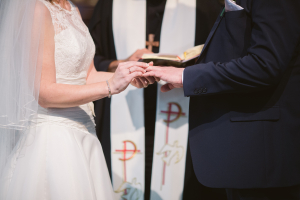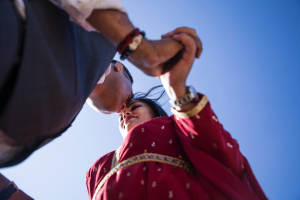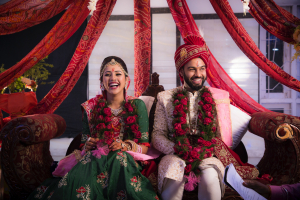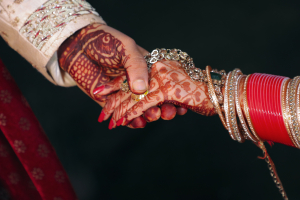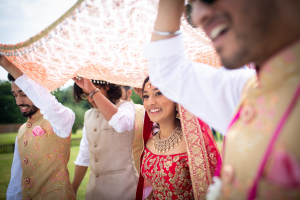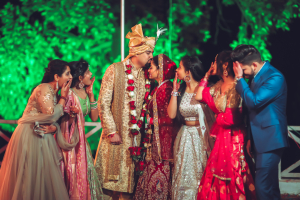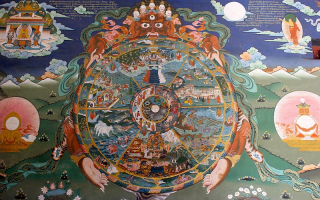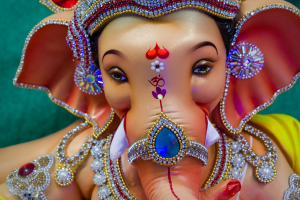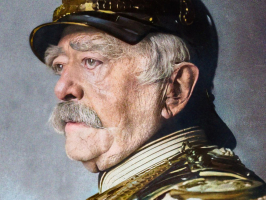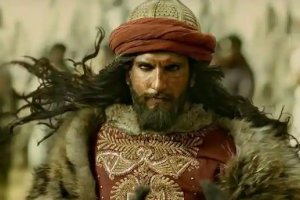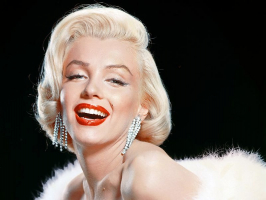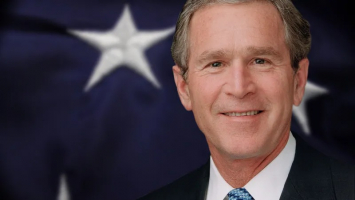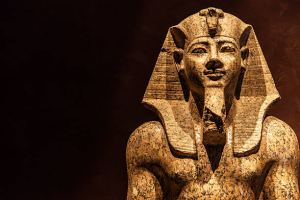Top 10 Interesting Facts about Buddhist Wedding
Buddhist weddings have a variety of customs that represent the fundamental principles of empathy, awareness, and cooperation. These customs range from ... read more...elaborate rituals to symbolic gestures. This article will look at these fascinating aspects that have a profound connection with Buddhist teachings.
-
Buddhist weddings involve a ceremony called Khachang. In this ceremony, a representative of the groom's family visits the home of the selected girl. A bottle of wine, which represents the joy of celebration, and the distinguished white scarf known as the "Khada," which represents respect and honor, are carried by this envoy. During this visit, the delicate balance of tradition and respect for both families comes to the fore.
The key event of Khachang happens when the envoy gets to the girl's family. After that, these presents are given to the girl's family as a symbol of the groom's family's sincerity and desire for the marriage. The marriage process will get started if the girl's family accepts these proposals. Horoscope matching, a tradition profoundly established in astrological beliefs, officially begins with this acceptance.
In general, this ceremonial meeting, known as Khachang, marks the beginning of the integration of two families and their treasured children. It is a profound moment where the universe and tradition interact. After this key phase, the families meet formally to further strengthen their connections and familiarity. They meticulously analyze the Kikas, which are similar to Hindu horoscopes, looking for patterns and alignments that bode good for the prospective marriage.
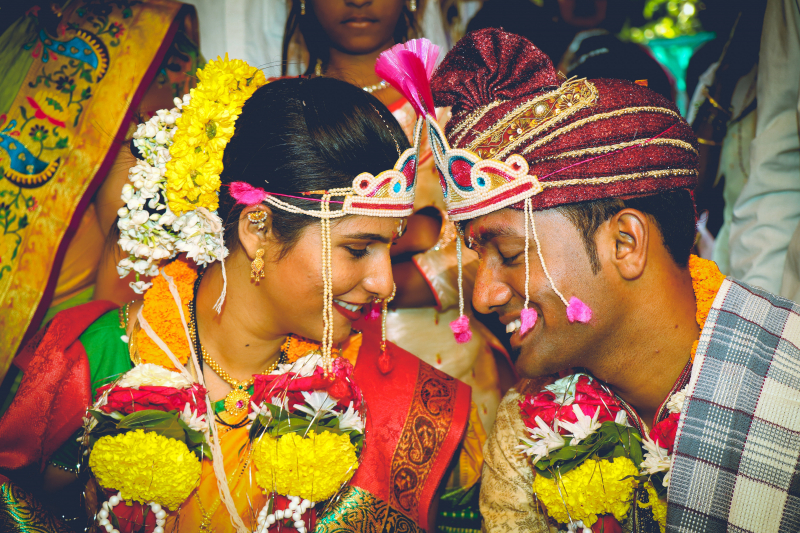
Photo by 🇮🇳Amol Nandiwadekarer on Pexels 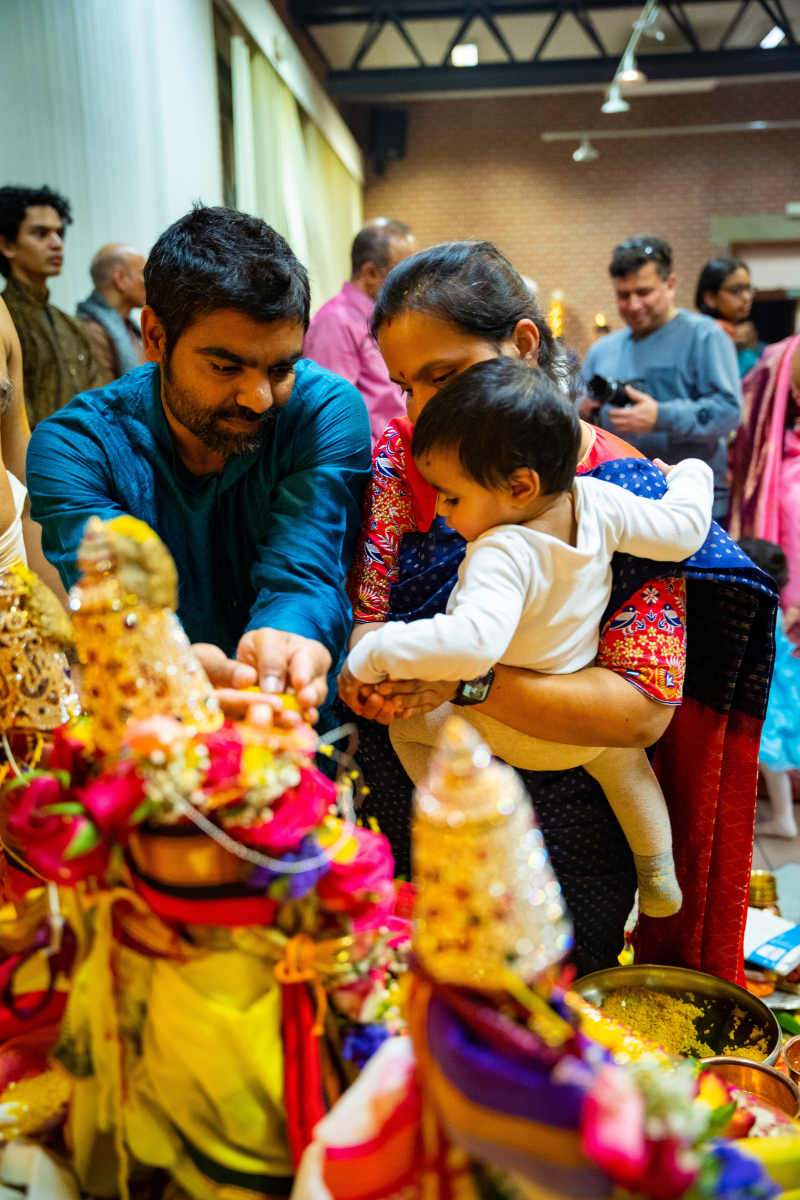
Photo by Teja J on Pexels -
Decorations combine the happy mood of the event with Buddhism's spiritual teachings. The main point of this intricate decoration is a big, imposing gold Buddha figure. The couple and their guests are drawn into a thoughtful setting where the values of knowledge and compassion are tangible by this radiant presence, which acts as a lighthouse.
The statue is surrounded by many components. A sensation of cleansing and communion with the holy permeates the air as incense wafts through it. Candles' slow flickering creates a mellow, calming illumination that promotes reflection and devotion. Flowers, especially lotuses, adorn the area as symbols of enlightenment, progress, and purity that mirror the couple's hopes for their union.
A unique addition to this ensemble is the hand-held meditation bells, their gentle chimes echoing through the space like whispers of serenity. These bells, often used during meditation practice, add an auditory dimension to the decor, invoking a sense of stillness and focus that aligns seamlessly with Buddhist teachings. Their presence resonates as a reminder that the wedding is more than a grand event; it's an opportunity for the couple and their loved ones to engage in a collective moment of mindfulness and reflection.
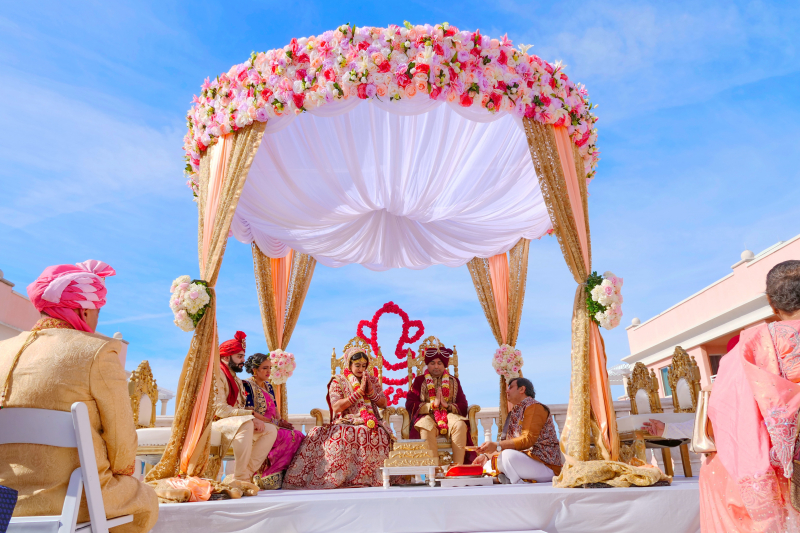
Photo by AMISH THAKKAR on Unsplash 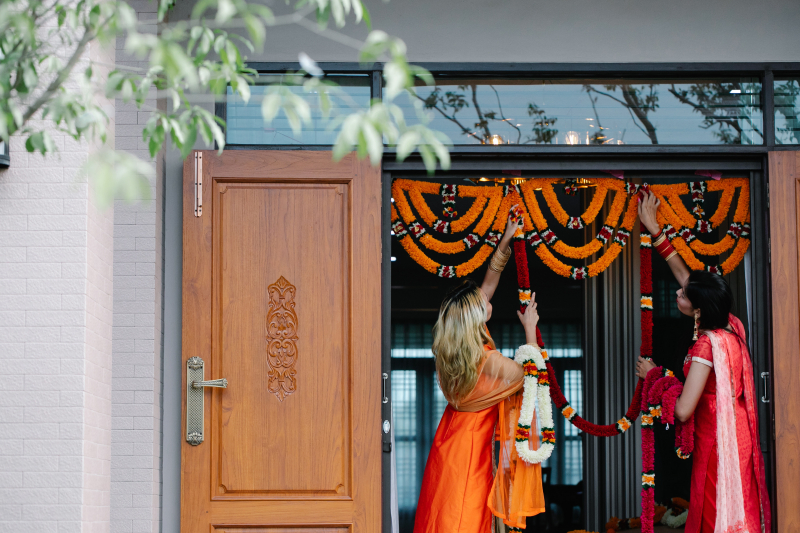
Photo by Lara Jameson on Pexels -
The distribution of a dowry from the groom's side to the bride's family is a custom that bears echoes of history and symbolism of Buddhist cultures. A physical demonstration of the groom's family's wish to help and respect the bride's family as they welcome her into their fold, the dowry is sometimes delivered in trays that include presents with both practical and symbolic meaning.
The number of trays is not picked at random; rather, they have deep cultural importance and are thought to bring good fortune, harmony, and blessings to the couple's travels. Each tray is thoughtfully decorated and placed to reflect a different aspect of this recently formed union and carries the combined desires of both families. The act of giving the dowry goes beyond simple financial transactions; it is a gift of goodwill that recognizes the value of developing a bond based on cooperation, trust, and understanding.
At its core, this practice reflects the respect for familial bonds, a reminder that the union of two individuals encompasses families, communities, and shared values. The exchange of the dowry honors the bride's family's role in nurturing their daughter and acknowledges the depth of commitment that marriage entails. It's a way of showing gratitude for the opportunity to welcome the bride into a new family.
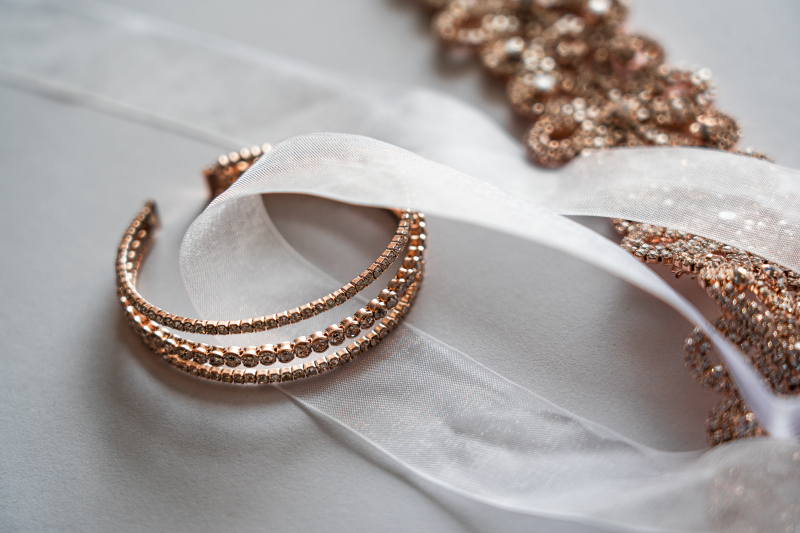
Photo by Castorly Stock on Pexels 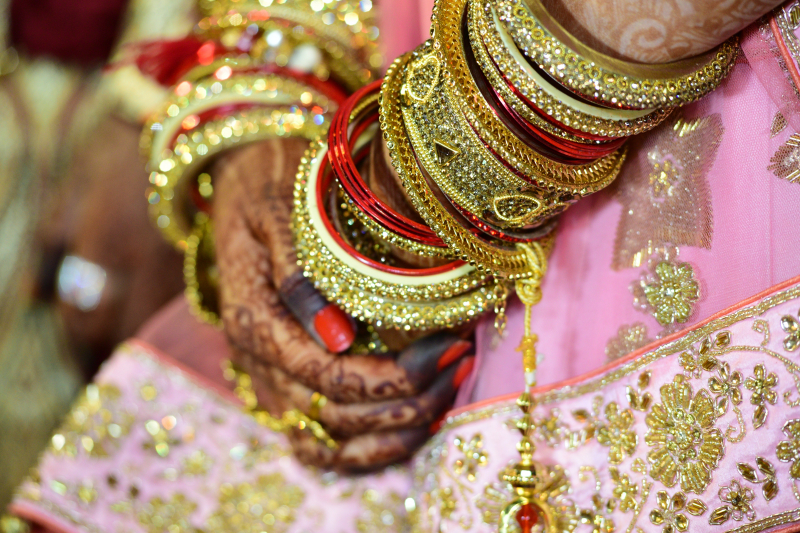
Photo by viresh studio on Pexels -
A moment of reflection and insight frequently occurs during a Buddhist wedding when a wedding party member stands up to read a piece that resonates with the profound teachings of respected people like the Dalai Lama of Tibet or Dgen of the Soto Zen school. The lessons of these famous individuals heightens its value. These people' advice is ageless and universal, demonstrating how their lessons about love, marriage, and the human experience are still relevant today.
Among the texts that often find their place in Buddhist weddings, the Sigalovada Sutta holds a special resonance.. As these verses are recited, they become a compass guiding the couple towards a life rooted in respect, compassion, and mutual understanding. The Sigalovada Sutta serves as a blueprint for a marriage imbued with the essence of Buddhist virtues—a partnership that nurtures not only the well-being of the couple themselves but also extends its influence to the broader community.
These passages serve as reminders that their love story is interconnected with the timeless wisdom of these revered figures, a reminder that their union carries the collective wisdom of generations. In this sacred moment, the teachings of these luminaries converge with the couple's aspirations, bridging the wisdom of the past with the promise of the future.
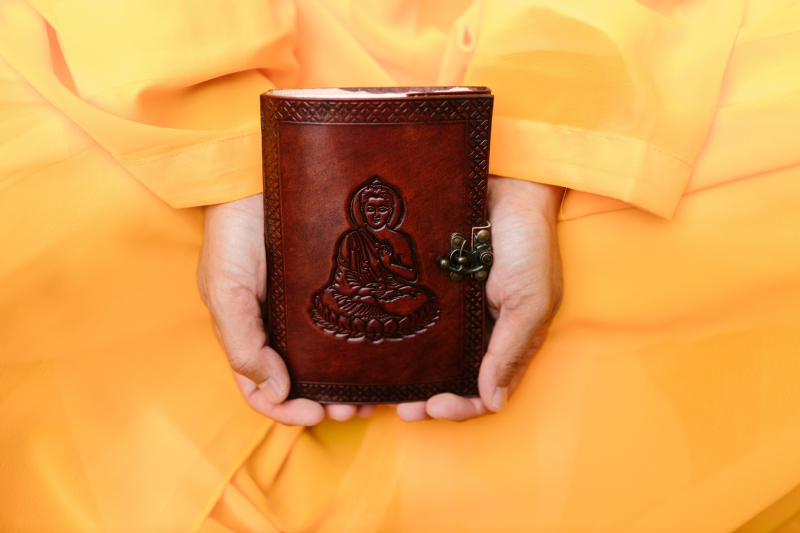
Photo by RDNE Stock project on Pexels 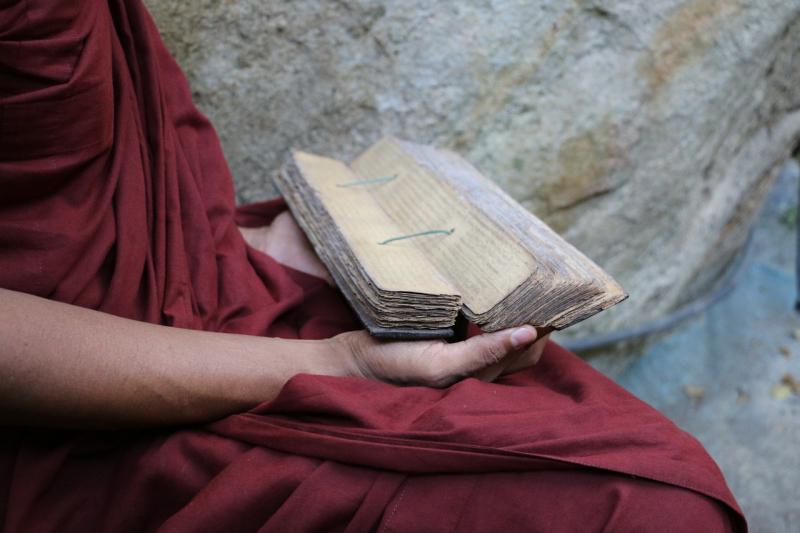
Image by Mahamevnawa Mahaviharaya from Pixabay -
The couple's movements toward the altar are an outward reflection of the couple's united commitment. The devotion, gratitude, and aspiration are created by a combination of fragrant flowers, flickering candles, scented incense, and symbolic items. Each part has a unique significance that adds to the elaborate symbolism refering to their shared journey.
By presenting these offerings, the lovers unite the material and spiritual realms and bring the Buddha's teachings to life in their relationship. Incense burning is a religious ritual that represents the purifying of intentions and letting go of individuality and attachment. Flowers' fragile petals serve as messengers of impermanence, reminding the couple of the fragile aspect of life and imploring them to cherish each moment. The soft light from the candles illuminates not just the room itself but also their shared journey toward mindfulness and self-awareness.
Furthermore, this act of reverence extends beyond the ceremonial moment. The offerings resonate as a reminder that their journey in marriage, like the path towards enlightenment, requires continuous effort, mindfulness, and compassion. They stand before the altar not as individuals but as a united force, seeking not only personal happiness but the enrichment of each other's lives and the world around them.
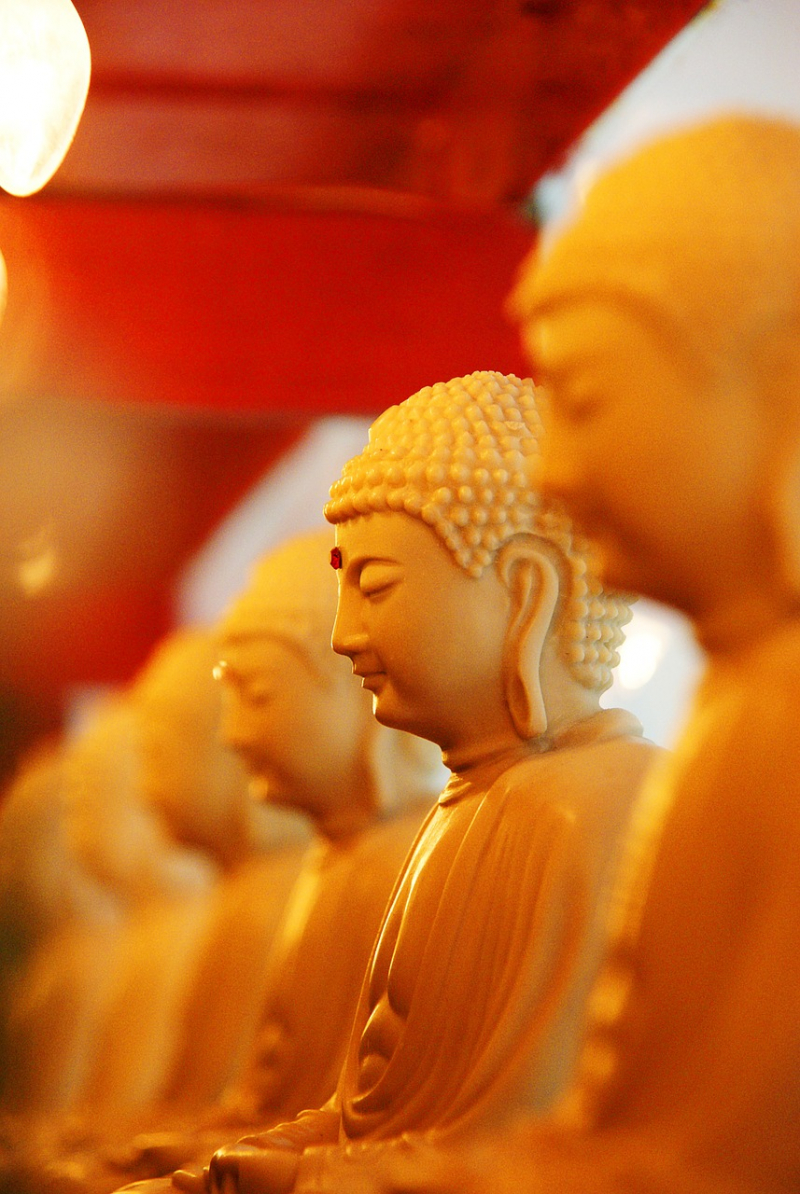
Image by Jeniffer, Wai Ting Tan from Pixabay 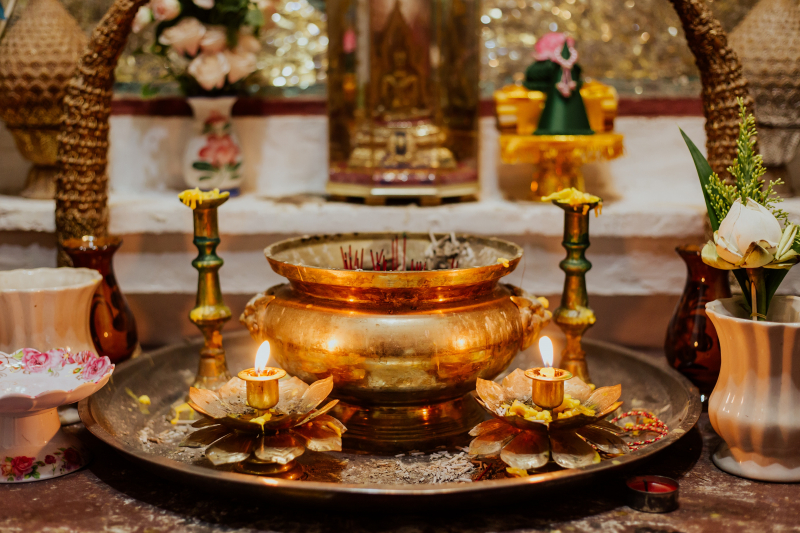
Photo by cottonbro studio on Pexels -
Monks assume an indispensable and sacred role in Buddhist weddings, infusing the proceedings with a sense of spirituality and profound meaning. Central to the role of monks in these weddings is the act of offering blessings, an ancient tradition that carries the accumulated goodwill of generations. These blessings extend far beyond mere well-wishing; they encapsulate a holistic desire for the couple's well-being, encompassing their emotional, spiritual, and physical aspects.
Another pivotal dimension of the monks' involvement lies in their guidance through meditation. This practice serves as a remarkable metaphor for the couple's journey. As they guide the couple through moments of quiet reflection and mindfulness, the monks symbolically lead them towards a path of mutual understanding, patience, and self-awareness. This practice of meditation infuses the ceremony with an aura of serenity and contemplation, reflecting the very essence of Buddhist principles.
Through their teachings and actions, monks facilitate the cultivation of a peaceful and mindful commencement to the couple's married life. The monks' blessings and meditation guidance extend a thread of continuity, binding the couple's union to the teachings of Buddhism and to the generations that have passed these teachings down. Through their blessings and meditation guidance, they set the couple on a path of mindfulness, compassion, and unity—a trajectory that aligns seamlessly with the teachings of Buddhism.
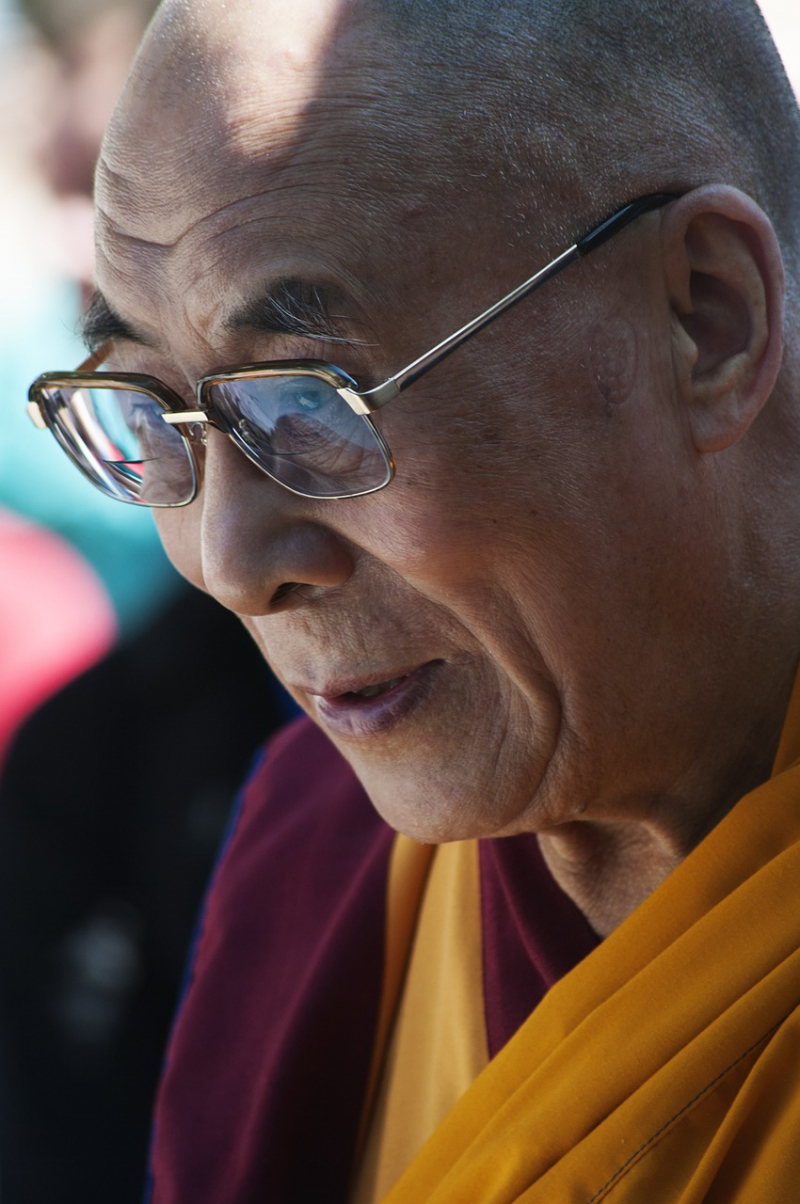
Image by Agne from Pixabay 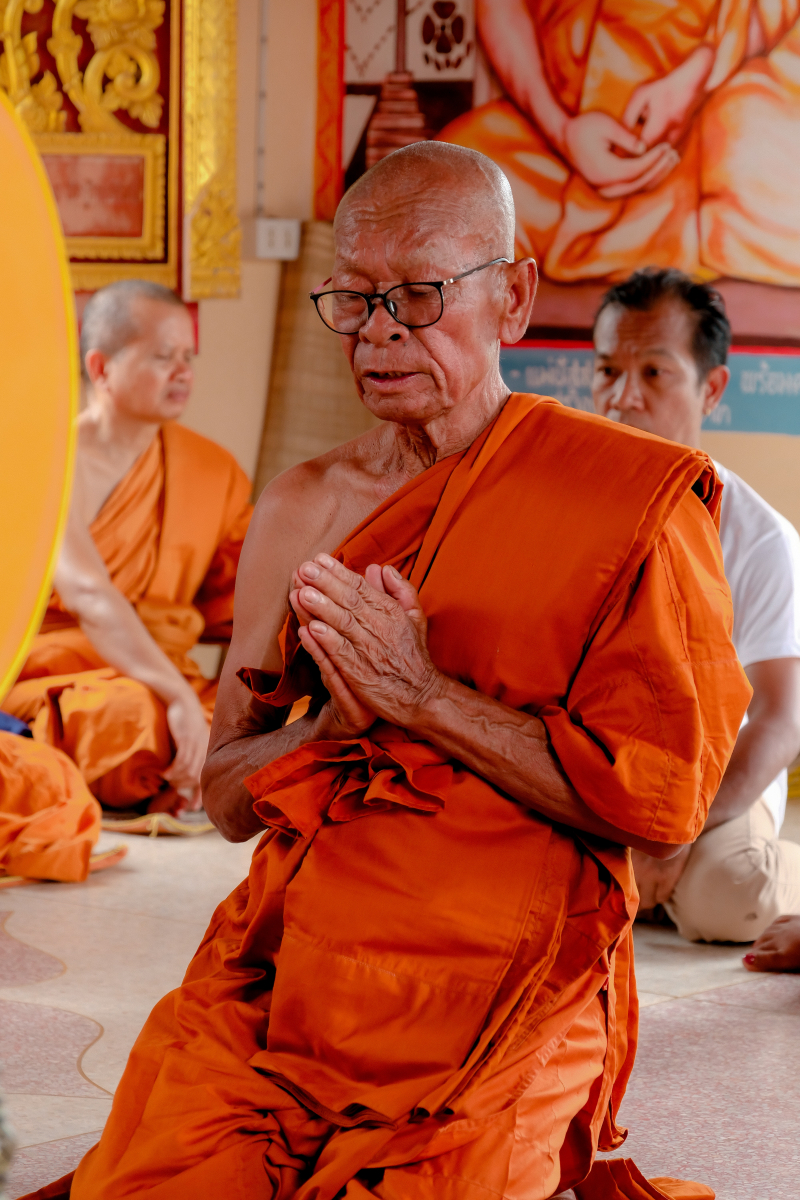
Photo by Namfon Sasimapor on Pexels -
While Buddhist teachings do not impose a specific dress code for weddings, the clothing chosen by the couple holds great significance as it mirrors the delicate interplay between contemporary trends and timeless traditions. The white gown symbolizes purity and the promise of a pristine beginning, while the tuxedo represents formality and the gravity of the occasion. This fusion of Western symbolism with Buddhist principles underscores the harmony sought in a marital union—where diverse elements coalesce to form a harmonious whole.
Conversely, many Buddhist couples draw inspiration from their cultural heritage and opt for traditional wedding garments, each a tapestry woven with history and meaning. These garments, often intricate and vibrant, carry the weight of generations and encapsulate the essence of ancestral customs. The rich colors, intricate embroideries, and distinct silhouettes speak a language of tradition and honor, connecting the present celebration to the legacy of the past.
In contemplating their attire, Buddhist couples embark on a journey of self-discovery and expression. They navigate the delicate balance between embracing modern inclinations and honoring time-honored practices, ultimately choosing attire that resonates with their unique identities. This choice serves as a visual proclamation of their commitment and unity, demonstrating that a wedding is not merely an event, but an amalgamation of personal stories and shared aspirations.
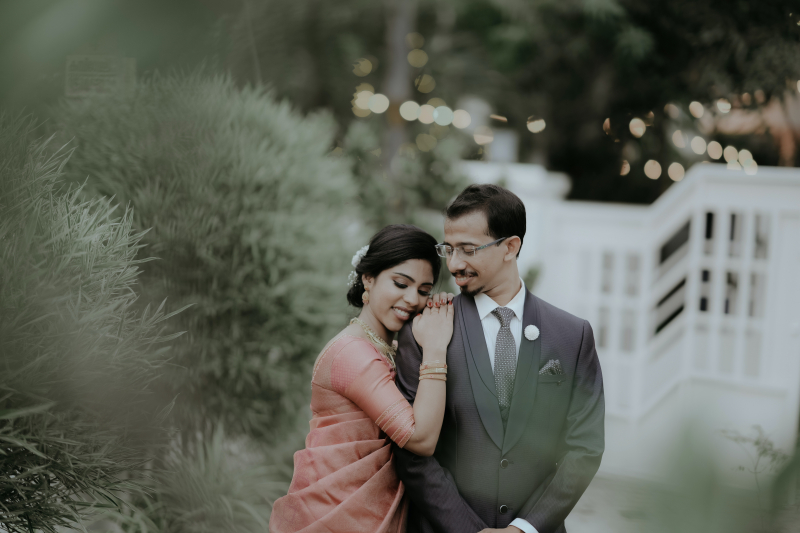
Photo by Spora on Pexels 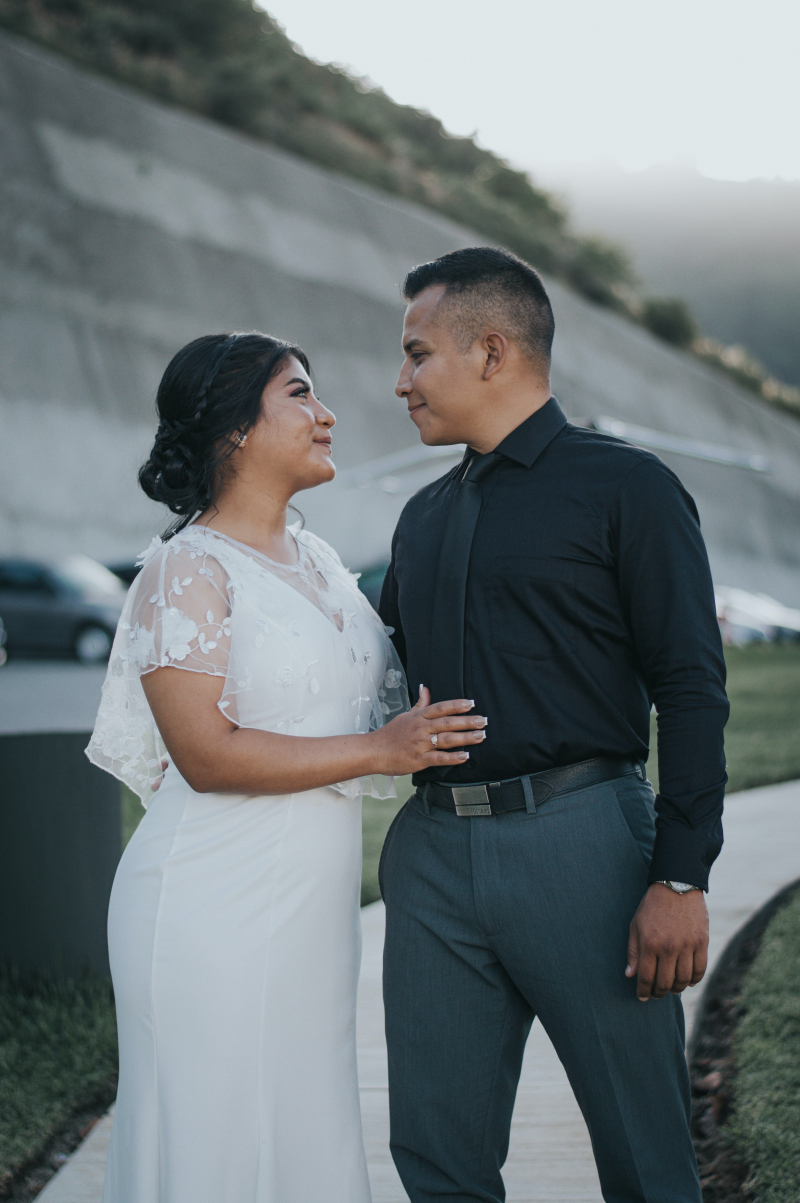
Photo by Alejandro Quiñonez on Pexels -
Nangchang or Chessian refers to the poignant and ceremonious formal engagement ceremony within the expansive canvas of Buddhist culture. This ritual, characterized by its intricate traditions and profound symbolism, stands as a threshold—a transition from a promise to a commitment, a symbolic union of families and aspirations. As the couple stands on the cusp of this sacred occasion, surrounded by loved ones and steeped in centuries-old practices, the air is charged with anticipation and respect for the gravity of the moment.
Gift-giving, which frequently carries both monetary and symbolic significance, serves as a link between families and creates a bond that goes beyond the relationship between the couple. These gifts are full of blessings, symbolizing not only the best wishes of the attendees but also the ideals, principles, and peaceful intents that form the foundation of the union. The couple's engagement goes beyond a simple personal promise to include shared cultural beliefs, customs, and a dedication to one another.
The Nangchang or Chesian ritual captures the core of Buddhist culture's attitude to marriage. It illustrates the holistic view of love as a power that transcends a couple's romantic union. This ritual also embodies the compassion, appreciation, and the dedication to a joint quest for enlightenment.
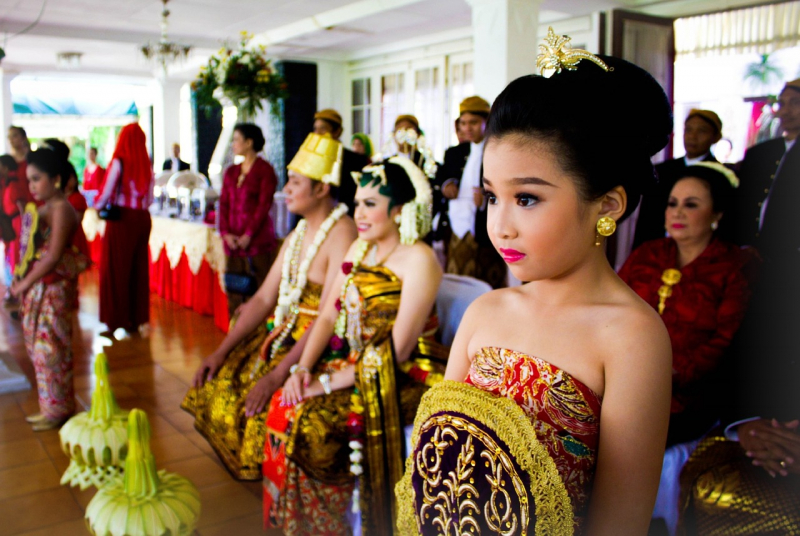
Image by Belajati Raihan Fahrizi from Pixabay Video by Vishal Vandane -
After the Buddhist wedding, a significant transition awaits the newlywed couple—a departure from the girl's paternal home, orchestrated with a profound respect for cosmic rhythms and cultural tradition. As they embark on this journey, the couple's chosen departure date, often nestled between the first and tenth day of their wedding, signifies more than mere timing; it underscores the delicate harmony they seek to align with the universe.
In the days that follow the wedding, the couple stands on the threshold of a new chapter, preparing to weave their individual stories into a shared narrative of love and partnership. This departure, however, is not a severing of ties; it is an affirmation of the unbreakable connection between their past, present, and future. Guided by the consultation of their kikas, the couple's departure carries a deeper resonance—an acknowledgment of the interplay between cosmic forces and human intention.
The significance of the chosen date extends beyond the mundane. Their departure is an ode to the timeless dance of existence, an acknowledgment of their place within the intricate tapestry of life. As they go ahead side by side, they embody Buddhism's emphasis on the impermanence of all things, the mutual dependence of all creatures, and the passing of time as they serve as ambassadors for both tradition and progress.
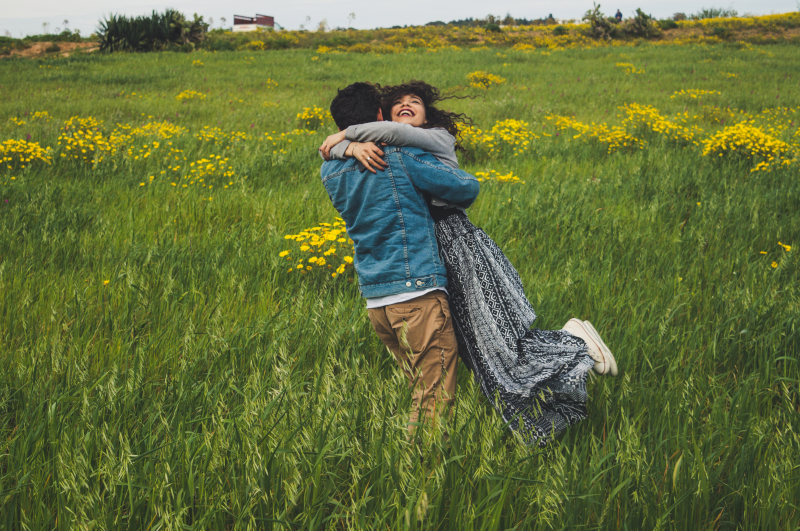
Photo by Chermiti Mohamed on Pexels 
Photo by Lucas Fonseca on Pexels -
Buddhist wedding rituals, as well as the festivities that follow, are enriched with a fascinating combination of song and dance that is integrated into the time-honored customs. The gatherings become vibrant expressions of shared delight and communal celebration. The air is filled with rhythms and songs that foster a sense of community and togetherness.
As the festivities progress, the tunes take on a narrative quality, recalling the couple's love story and the rich cultural history that surrounds them. The dance becomes an artistic piece that transcends language and conveys emotions, histories, and aspirations via lovely movements and rhythmic expressions. The heart of Buddhist teachings, which emphasize the linked nature of all beings and the beauty of unity, are highlighted by this exquisite fusion of music and dance.
The cheerful sounds of traditional instruments and the elegant movements of the dancers blend with the beat of life itself throughout the festivities. The event takes on the character of the couple's journey. It transcends individual lives to connect families, communities, and rich heritage. The Buddhist teachings of Buddhism highlight the beauty of harmony, compassion, and interconnection. Music and dance serve as bridges, uniting generations, cultures, and shared ideals.
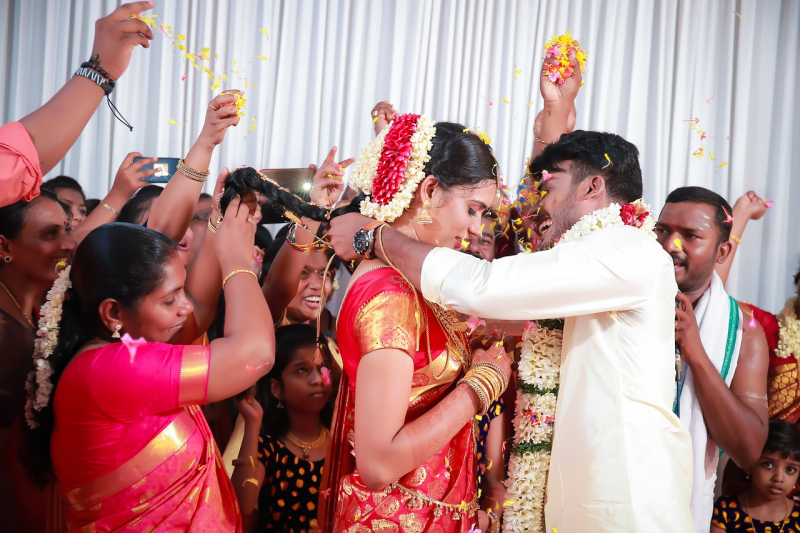
Image by ANOOP VS from Pixabay Video by ASHISH VIDEO VISION












